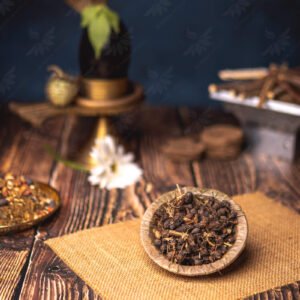Pili Rai, also known as Yellow Turmeric or Curcuma longa, is a cherished and vibrant herb that holds immense cultural, spiritual, and medicinal significance. It is a perennial plant native to the Indian subcontinent and Southeast Asia. Pili Rai is widely recognized for its vibrant yellow color and distinct earthy aroma. The scent of
Pili Rai is often described as warm, spicy, and slightly bitter, adding a unique dimension to its overall appeal. Its vibrant color and aromatic properties make it a popular ingredient in culinary traditions, spiritual practices, and traditional medicine. In many cultures, Pili Rai is considered sacred and is often used in religious rituals, ceremonies, and festivities. It symbolizes purity, prosperity, and auspiciousness, and is believed to ward off negative energies and bring good fortune.
Pili Rai is also associated with the Hindu goddess Lakshmi, who represents wealth, beauty, and abundance. Medicinally, Pili Rai has been valued for centuries for its numerous health benefits. It contains a compound called curcumin, which is known for its anti-inflammatory, antioxidant, and antimicrobial properties. Pili Rai is used in traditional Ayurvedic medicine to support digestion, boost immunity, and promote overall well-being. It is also recognized for its potential to alleviate various ailments and improve skin health. T
he cultural significance of Pili Rai is deeply rooted in ancient traditions and practices. It has been mentioned in historical texts and scriptures, representing vitality, purification, and divine blessings. Pili Rai is often used as a natural dye, a spice, and a sacred offering in religious ceremonies, symbolizing the vibrant and transformative power of nature. The rarity and cultural importance of Pili Rai have contributed to its esteemed status. It has been cherished and traded across different civilizations for its vibrant color, unique aroma, and health-promoting properties.






Reviews
There are no reviews yet.